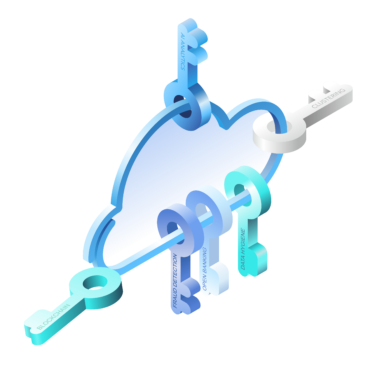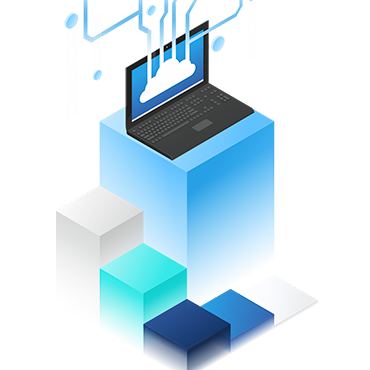Cloud K8s – are your services really cloud-ready?
Updated 27 Oct 2022
Moving to the cloud is quickly becoming a strategic goal for organisations as a result of increased consumer expectations and technology’s rapid advancement. But for many businesses, capturing the $1 trillion in value that the cloud offers has proven frustratingly challenging. This challenge is mostly due to the fact that IT’s operational model is still mired in a mess of antiquated procedures, methods, and tools.
To solve this issue, business and IT must step back and consider their cloud operating model holistically, and whether you should utilize multi cloud Kubernetes, for example. And they must act immediately. IT now plays a key role in generating value and in satisfying consumer and corporate demands for speed, flexibility, affordability, and dependability.
The complexity and expectations around new architectures, agile application development, on-demand access to infrastructure through self-service, cloud migration, and distributed computing, to mention a few, are growing, and this raises the risk of failure.
With many components and evolving cloud technologies, it is important to continue to ask whether your services really are cloud-ready.
In this article, we will go through many of the applications and features you should be using to ensure your services are truly cloud-ready.
First, why is Kubernetes called K8s and what is K8?
The acronym’s origins may be traced back to the late 1980s. All of the explanations for why Kubernetes is referred to as cloud K8s point to one idea: straightforward communication. When it comes to humans, communication has always been challenging. Nobody like using lengthy sentences or wasting time doing so whenever they are working. The Kubernetes K8s have the same motivation.
People who work in the IT sector often lack free time. Their main goal is to communicate effectively while without wasting others’ time. This is why many IT professionals simplify terms by using numeronym forms. The majority of the time, a word is shortened by preserving its initial and final letters and increasing the overall number of letters in the term.
Kubernetes also fits this description. “K” is the first letter and “S” is the last. It consists of 10 words, however there are 8 extra letters in the word “Kubernetes” between the first and last letter. The eight originates from this. Combining them together yields “K8s,” a straightforward yet efficient abbreviation for the phrase Kubernetes.
How to implement the Kubernetes network model
The container runtime on each node implements the network model. The most popular container runtimes handle their network and security features via Container Network Interface (CNI) plugins. There are several CNI plugins available from numerous suppliers. Others provide more sophisticated solutions, such as interaction with other container orchestration systems, running numerous CNI plugins, extensive IPAM capabilities, etc. Some of them merely offer the most basic functions, such as adding and deleting network interfaces.
What is Kubernetes Networking?
K8 networking enables communication between Kubernetes components and with external applications. Because it is built on a flat network topology, the Kubernetes platform differs from previous networking solutions in that it does not need mapping host ports to container ports. The Kubernetes platform offers a method for managing distributed systems by allowing apps to share computers without having to dynamically assign ports.
A Kubernetes cluster has Kubernetes networking, which enables all of the cluster’s components to connect with one another. What does networking, a feature that so many engineers use but so few comprehend, look like inside the engine? To operate distributed systems over a cluster of machines, Kubernetes was developed. K8s Networking becomes an essential and key part of implementation for distributed systems. You can operate, monitor, and debug applications that are running on Kubernetes in the best way possible by understanding the Kubernetes networking model.
OpenStack and Kubernetes
There must be a location for Kubernetes to execute, and that location may be an OpenStack virtual machine. A Kubernetes cluster can operate at scale because OpenStack was created and deployed to do so. The APIs for OpenStack provide K8s on OpenStack a uniform abstraction layer to connect with.
Running a highly available infrastructure is made possible with the freedom and relatively low scaffolding that Kubernetes containers offer. Containers offer speedy infrastructure deployment and deconstruction with lots of flexibility, which is one reason to adopt them. Running a containerized version of OpenStack provides you all the advantages of containers and all the flexibility and power of OpenStack.
How to use Kubernetes on Mac
The two main options to use Kubernetes on Mac are Docker Desktop and Minikube.
Docker for Mac offers an out-of-the-box solution leveraging a native virtualization technology, much like the Windows version does. Although Docker for Mac is fairly simple to set up, there aren’t many configuration choices available.
On the other side, Minikube has more complex configuration requirements but offers more comprehensive K8s Mac compatibility with a variety of add-ons and drivers (such as VirtualBox).
How to Use Kubernetes with Prometheus
You can keep an eye on your cloud native K8s cluster using the free monitoring tool Prometheus. A complicated system with several moving pieces, Kubernetes. Such a dynamic system necessitates the use of modern monitoring technologies. One such application is Prometheus.
K8s Prometheus is a free monitoring tool that may gather statistics from many target systems. The measurements are gathered and kept as time-series data. It also has a great alerting system that is compatible with widely used team communication and incident management software.
A pull-based mechanism that sends HTTP requests is used by Prometheus. Every request, referred to as a scrape, is made in accordance with the configuration instructions specified in your deployment file. The essential metrics and each response to a scrape are processed and stored in a repository.
This repository is simply a customised database that has been installed on a server with enormous data storage capacity. A single Prometheus server can keep an eye on thousands of computers at once.
How to Use Kubernetes with Grafana
Grafana retrieves metrics from many databases. It includes a unique syntax and query editor that extracts and analyses data for each source.
Numerous data sources, including Prometheus, Mysql, MSSQL, PostgreSQL, Influx DB, Graphite, and ElasticSearch are supported by Grafana. Additionally, it can load data from a few cloud-managed services, like AWS CloudWatch, Azure Monitor, and Google Stackdriver. You may also expand K8s Grafana by adding more data storage and web sources with the correct plugin. The analysis tool initially loads time series data for infrastructure and applications (such as disc I/O use, CPU, and RAM), after which it performs the analysis.
Scalability of services and applications is one of Kubernetes’ key advantages. It becomes impossible to monitor thousands of programmes manually or using scripts. You must use a scalable monitoring system as well! Prometheus and Grafana enter the picture at this point.
Your platform metrics will be gathered, saved, and used to your advantage by Prometheus. Grafana, on the other hand, is a plug-in for Prometheus that enables you to make stunning dashboards and visualisations.
Deploy and Access the Kubernetes Dashboard
How do you maintain track of all the containers you deploy using Kubernetes when there are hundreds of them? It won’t work with a command-line interface. Everything must be represented visually. Welcome to the Kubernetes dashboard.
The official web-based UI for Kubernetes, known as Kubernetes Dashboard, consists of a collection of services that make cluster management easier.
Conclusion
The combination of OpenStack, Prometheus, Grafana, and Kubernetes Dashboard offers an effective and cutting-edge open, hybrid-cloud platform with new security features if your company wants to use cloud-native computing in data centres. Run-time hardware acceleration capabilities are provided by this robust platform for running crucial software-defined networking, storage, and security services.
Both traditional business apps and cloud-native workloads may now share additional server resources.



